Sustain/Ability:
The single word: a cliché. The two words apart: a dialectic.
Sustain, Ability: The single, unified word polarizes design as responsible versus creative. When separated, a dialectic emerges. See the following associations
Atlas, the Titan, held up the sky. He had fought against the Olympian gods and lost and was condemned to holding up the sky. His ability sustained the world. His endurance preserved it. Condemnation or Atlas’s responsible choice?
Portara, the Gate of Apollo on the Greek island of Naxos, stands alone among ruins of a temple, unfinished though intended to be most glorious, and dismantled later on. The 80 ton marble Gate was sustained by the in-ability to disassemble it.
In music, sustain is a parameter of sound over time. As its name implies, it denotes the period of time during which the sound remains before its frequency becomes inaudible. While the resonating sounds are sustained, we can visualize Waves perpetuating. If we sustain the visual of waves in our imagination, three-dimensional curves emerge.
Reflecting on the project, John Rajchman writes, “The classical musical strategy of ‘sustaining’ a musical idea through given phrases offers one idea, which, drawing on the disjunctive tensions of materials and forms, would allow, in space and time, for the generation of a kind of ecological spring or spatio-temporal intensifier, capable of generating rhythmic waves within a confined space, in light if not in sound. What effects might the creation of such vital springs have within the space, at once architectural and historical, of the Technology and Science Museum in Milan? Such is the question posed by these young Greek architects in this singular project in and for the Milan Triennial, suggesting ideas that might now be taken up or sustained by others, in new ways, with fresh abilities.”
For this installation, the dialectic of the two words, Sustain and Ability, becomes manifest in three dimensional space through the disjunctions of two materials, their properties and their shaping potential. Linear or volumetric, open or solid, left or right, forms are reduced to elementary, archetypal, pre-loaded yet expressive Spirals.
Metal, originally reluctant to change, gains elasticity when shaped into a helical spring. The spring, through compression and expansion, has the ability to store, absorb or release energy. It can sustain an ever-changing form and can always revert to its original condition. Springs and helical forms are to be found everywhere around us, literally, metaphorically and symbolically. One counterpoint to “taming” metal into a spiral form is making a soft material stronger by spiraling.
Concept and Design Dimitra Tsachrelia, Eirini Tsachrelia, Nicholas Karytinos
Project Team Christina Likoka, Gregorio Chierici, Ankenny Hernandez, Dimitris Papageorgiou Pope, Efi-Ilda Oikonomidi, Walter J. Sueldo
Structural Analysis Justin Den Herder, Ioannis Psaras
Construction Paravalos Sons Ltd, Greece
Lighting Design Lianka Papakammenou
Photography Gregorio Chierici, Christina Likoka, Eirini Tsachrelia
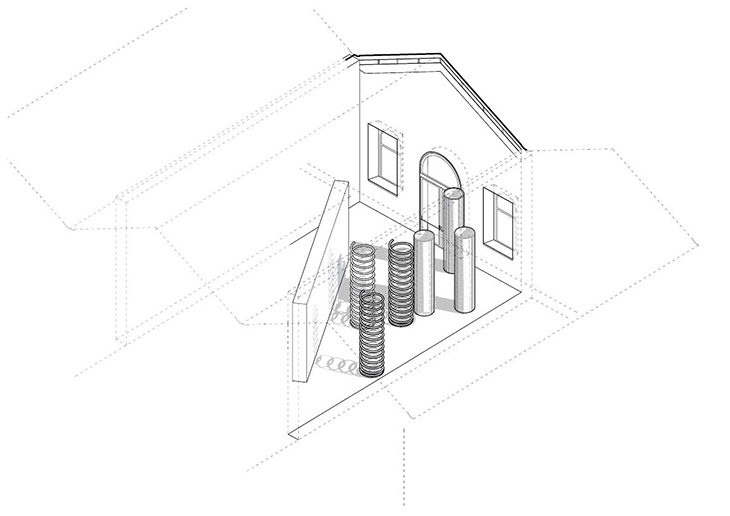 SUSTAIN / ABILITY, AXONOMETRIC
SUSTAIN / ABILITY, AXONOMETRIC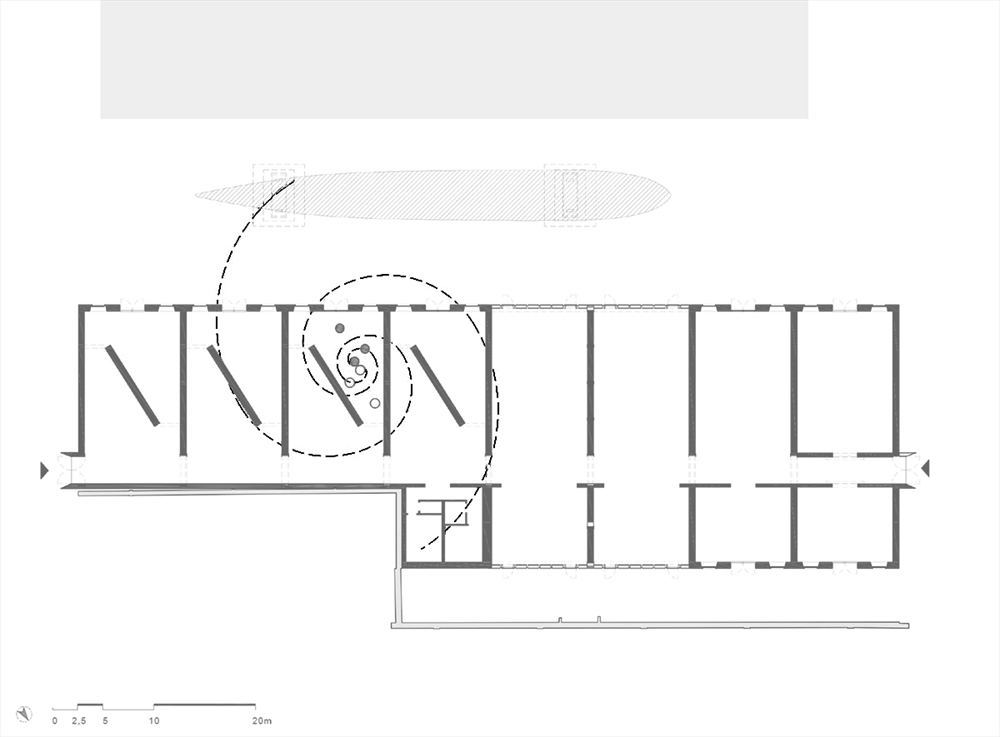 INSTALLATION PLAN AT THE MUSEUM OF SCIENCE AND TECHNOLOGY LEONARDO DA VINCI IN MILAN
INSTALLATION PLAN AT THE MUSEUM OF SCIENCE AND TECHNOLOGY LEONARDO DA VINCI IN MILAN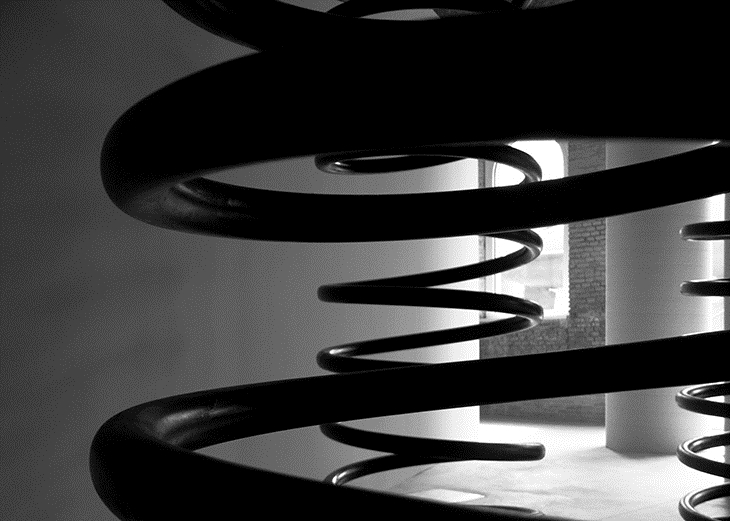 SUSTAIN/ABILITY, CLOSEUP
SUSTAIN/ABILITY, CLOSEUP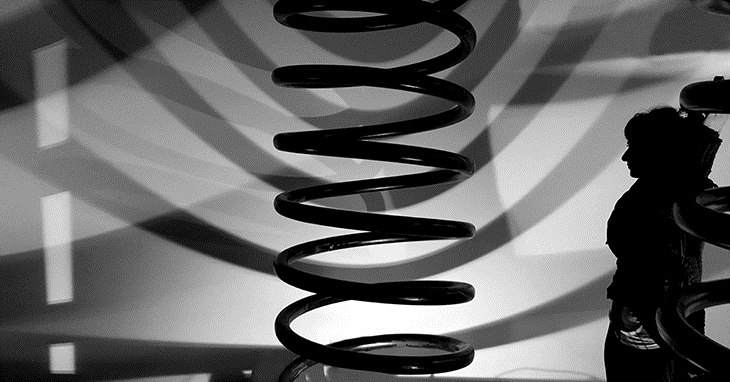 SUSTAIN/ABILITY, SHADOW PLAY
SUSTAIN/ABILITY, SHADOW PLAY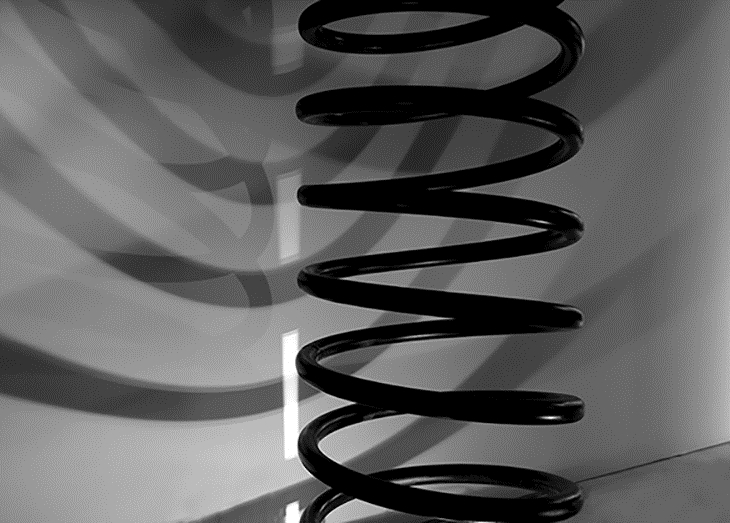 SUSTAIN/ABILITY, SHADOW PLAY
SUSTAIN/ABILITY, SHADOW PLAY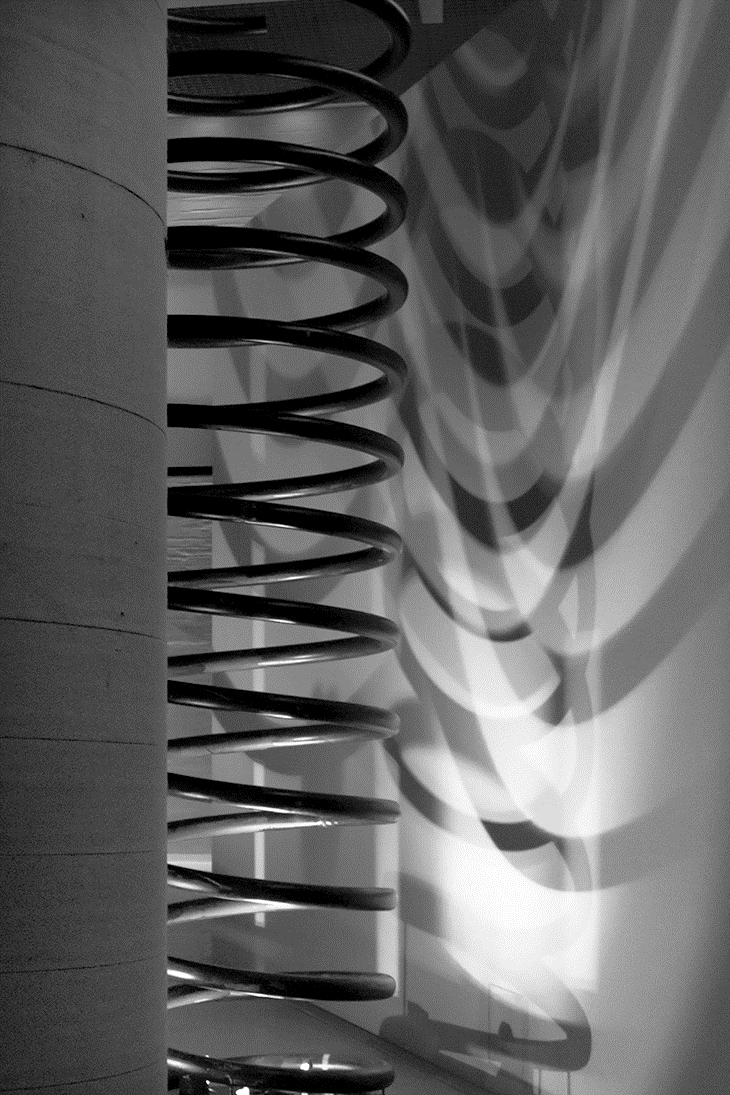 SUSTAIN/ABILITY, SPIRAL SOLIDS, SPIRAL SPRINGS AND LIGHT WAVES
SUSTAIN/ABILITY, SPIRAL SOLIDS, SPIRAL SPRINGS AND LIGHT WAVES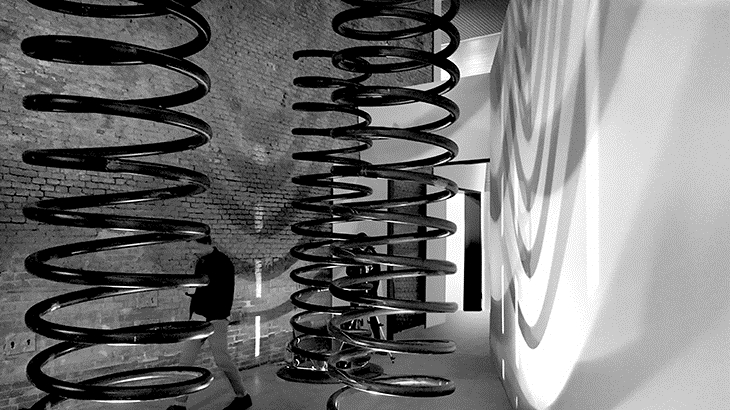 SUSTAIN/ABILITY AT THE MUSEUM OF SCIENCE AND TECHNOLOGY LEONARDO DA VINCI, MILAN
SUSTAIN/ABILITY AT THE MUSEUM OF SCIENCE AND TECHNOLOGY LEONARDO DA VINCI, MILAN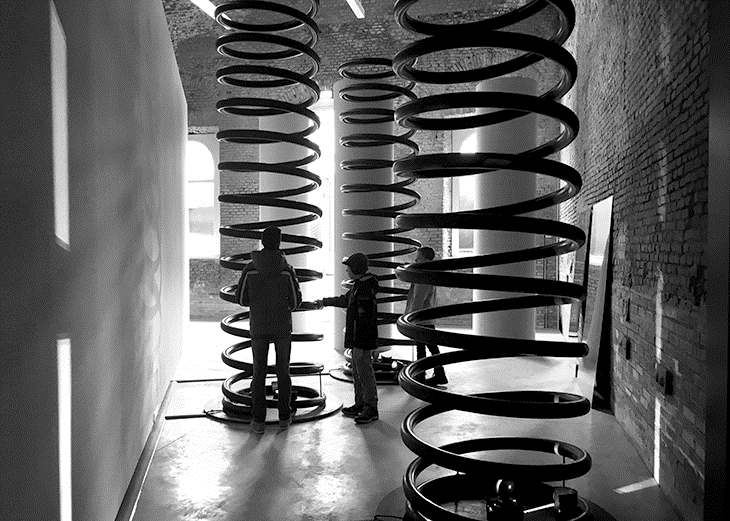 SUSTAIN/ABILITY AT THE MUSEUM OF SCIENCE AND TECHNOLOGY LEONARDO DA VINCI, MILAN
SUSTAIN/ABILITY AT THE MUSEUM OF SCIENCE AND TECHNOLOGY LEONARDO DA VINCI, MILANREAD ALSO: THE CONCRETE SOLITUDE OF A SEASHORE LIBRARY BY VECTOR ARCHITECTS